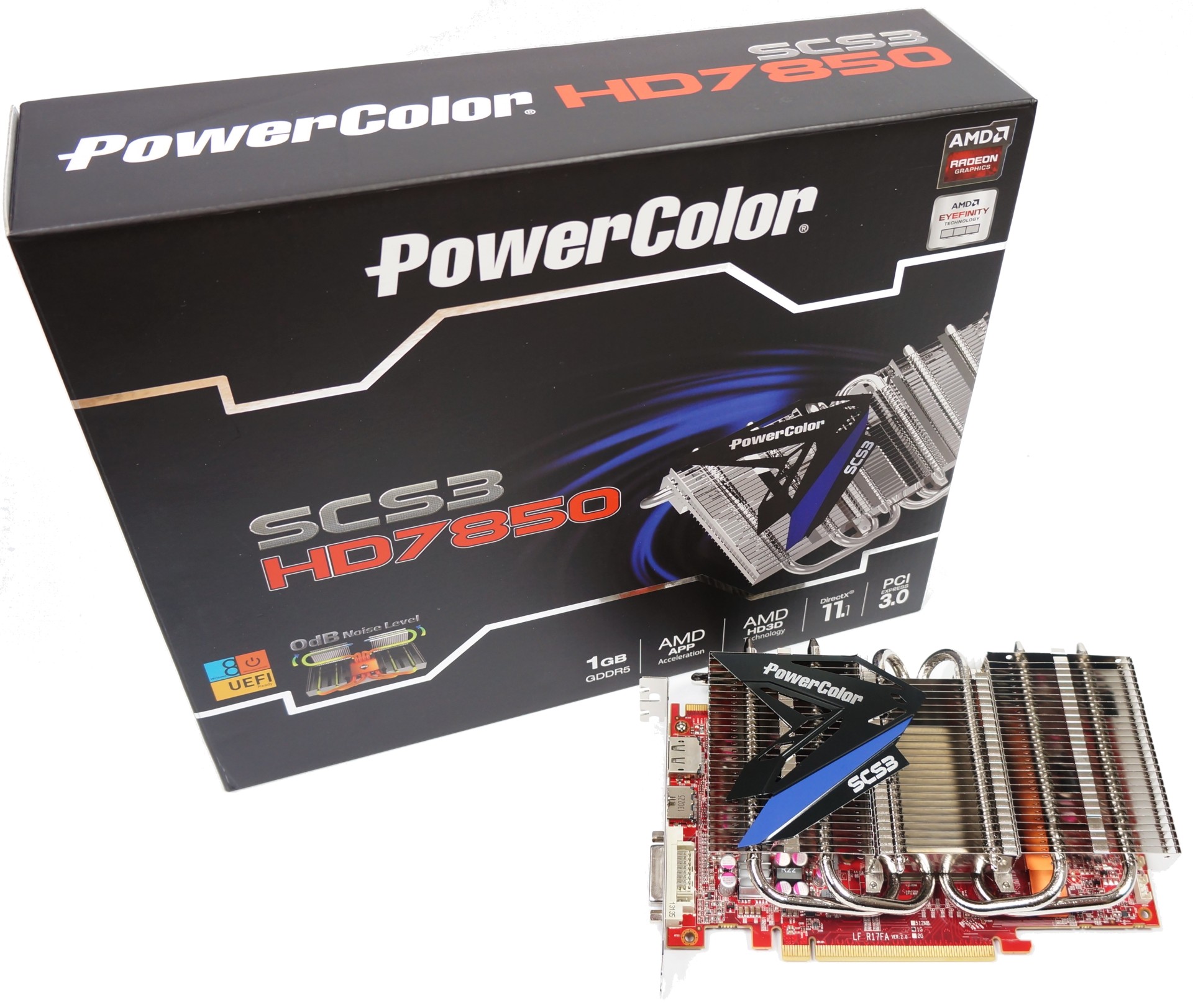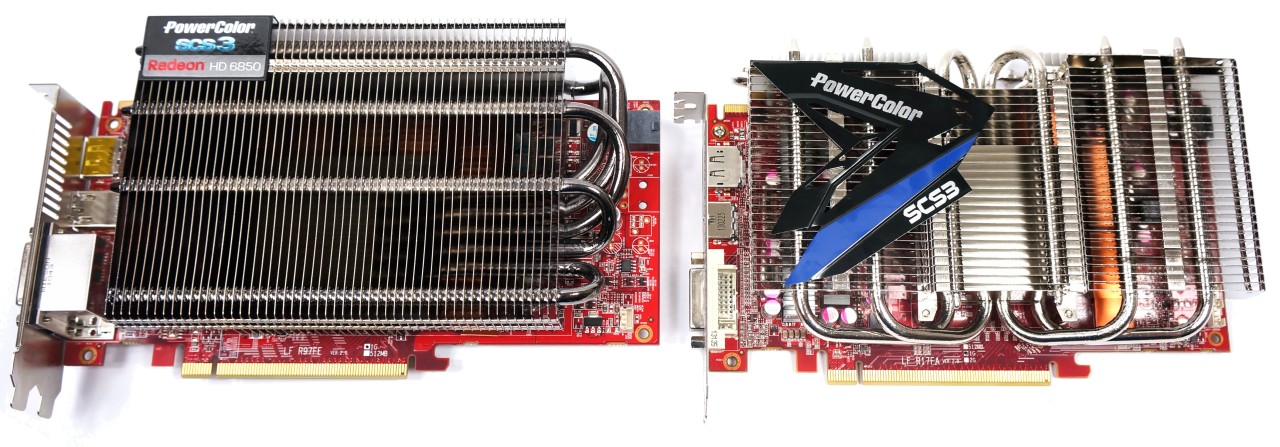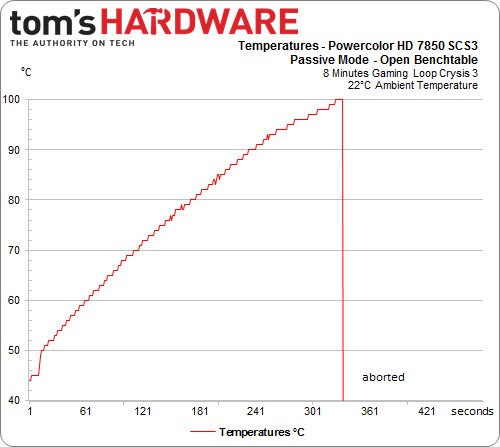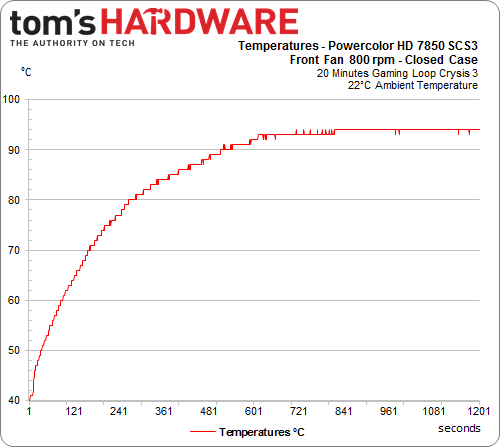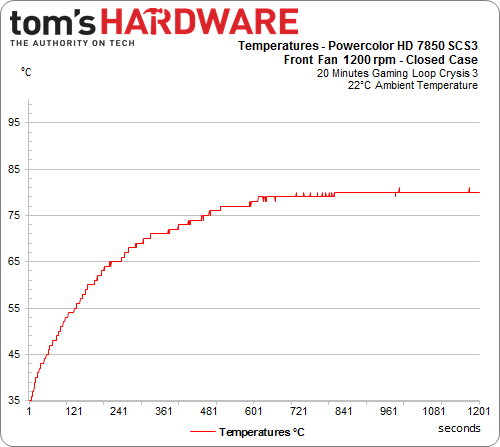Quick Take: PowerColor's Passively-Cooled Radeon HD 7850 SCS3
Tom's Hardware takes a quick look at PowerColor's passively-cooled Radeon HD 7850 SCS3. You're going to need notable airflow inside your case to keep this board stable, so don't expect to build a silent gaming PC with it.
Several days ago, our team in Germany had the opportunity to review PowerColor's Radeon HD 7850 SCS3. Why should you care about another Radeon HD 7850? Because it's all-passive, that's why. For your reading pleasure, we present the highlights of the German review and our conclusions. The curious or multilingual among our readers can check out the full review in German.
The cooler on the new card looks quite a bit smaller and more compact than that of its predecessor, PowerColor's Radeon HD 6850 SCS3. This is an interesting and somewhat bold design decision because, although AMD’s new Pitcairn GPUs deliver significantly higher gaming performance and can be considered more efficient than the Barts chips that came before them, they still end up using more power.
Specifically, the HD 7850 SCS3 consumes 117 W in our gaming loop, a full 7 W more than the older PowerColor HD 6850 SCS3! The problem with that is that the older card was already running into temperature-related problems. So how does PowerColor expect to successfully cool this new card with nothing but a passive heat sink? The answer is actually quite simple: the card was designed for semi-passive systems and relies on adequate air flow inside the case.
PowerColor sets the card to run at AMD’s reference clocks, namely 860 MHz for the core and 1,200 MHz for the GDDR5 memory. The most obvious change to the new cooler aside from its size is the orientation of its cooling fins. On the new card, the fins are aligned horizontally, allowing uninterrupted air flow from the front of the case to the back, assuming you’re using front-mounted fans. Other fans don’t contribute much to cooling the card in this setup.



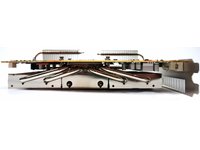
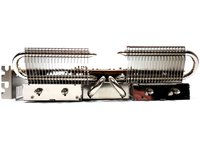
Now that we’ve got the card covered, let’s get to the benchmarks. First, we wanted to know what this card could do in completely passively-cooled system. A short check revealed that this is not a viable option, which came as no surprise. In our open test setup using a bench table and passive cooling without additional airflow, the test aborted.
Now let’s add some airflow, courtesy of a front-mounted fan. We installed our test hardware in Corsair’s gigantic Obsidian 900D, with card and fan separated by some distance. In a smaller enclosure, 800 RPM may be enough to keep the card cool enough for extended gaming sessions, but that won’t cut it in Corsair’s cavernous case. Reducing the distance between card and fan to about 20 cm (8 inches) would help. At any rate, if you want to use the PowerColor Radeon HD 7850 SCS3 in a quiet system with slow-spinning fans, it really needs a small case to provide optimal airflow from front to back.
If you’ve got your heart set on a bigger case, you’ll need to increase fan speed to at least 1200 RPM. That’s not so bad, though, and if you choose larger 120 or 140 mm fans instead of the smaller 90 mm variety, you get a double bonus. The fans will be quieter and other components like the hard drive benefit from additional cooling as well.
Get Tom's Hardware's best news and in-depth reviews, straight to your inbox.
That brings us to our conclusion, which is actually quite simple. PowerColor’s Radeon HD 7850 SCS3 is an interesting card with a passive cooler. However, since it relies on airflow from case fans, it’s not practical in a completely passive system like passively-cooled Radeon HD 7750s from companies like PowerColor, HIS, and Sapphire. In a roundabout way, PowerColor even admits to that, quoting "0 dB Noise level" for the card. True enough, but you’ll still need a case fan to push some air, and no matter how you slice it, they’re not silent. Kind of sneaky, relying on outside help to fulfill a promise.

Igor Wallossek wrote a wide variety of hardware articles for Tom's Hardware, with a strong focus on technical analysis and in-depth reviews. His contributions have spanned a broad spectrum of PC components, including GPUs, CPUs, workstations, and PC builds. His insightful articles provide readers with detailed knowledge to make informed decisions in the ever-evolving tech landscape
-
It's still not a smart Idea to run a completely passive system though. If you don't exhaust heat the air in your case will heat up and it can damage/reduce the lifespan of your components. Besides, it's always nice to hear some sound to assure that your computer is ok (unless you're doing studio work, which still shouldn't pick up noise if you use quiet enough case fans).Reply
-
bombebomb So what you're saying is a passively cooled video card, requires active cooling? FantasticReply -
nevilence I have never been bothered enough by fan noise (unless busted) to run the risks of passive cooling. In fact in my current system I have 4 fans I think, sometimes in look through the window in the case to check if they are actually running at all they are that quiet.Reply -
masmotors i dont get the point of this seems like great for silent freaks but the fans dont bug meReply -
RazberyBandit Passive card needs active airflow or it may overheat? Wow... That's just dumb.Reply
Anyone who buys one of these would be wise to Zip-tie a fan or two to it. -
rmpumper The only good thing about "passive" GPUs is the nice big heatsink to which you can attach a 12-14cm silent fan.Reply -
xpressoz At least on full load, the side and rear front coolers will still run at lowest speed and maybe will keep this card cool enough instead of his own cooler and "take off" when the fan is in full load.Reply
PS: For the 6850 SCS3 with a 80mm fan, lowest RPM given by MB and open case, 30C ambient it hardly gets over 60C on full load. The fan is put with rubber pins at the bottom of the case and in a midiATX case (i think) the distance isn't very big between card and fan. This distance is better for low temps then the attached version of same cooler as i noticed. And with a 12mm fan on low RPM put in front and side its a bit cooler too. -
xpressoz At least on full load, the side and rear front coolers will still run at lowest speed and maybe will keep this card cool enough instead of his own cooler and "take off" when the fan is in full load.Reply
PS: For the 6850 SCS3 with a 80mm fan, lowest RPM given by MB and open case, 30C ambient it hardly gets over 60C on full load. The fan is put with rubber pins at the bottom of the case and in a midiATX case (i think) the distance isn't very big between card and fan. This distance is better for low temps then the attached version of same cooler as i noticed. And with a 12mm fan on low RPM put in front and side its a bit cooler too.
